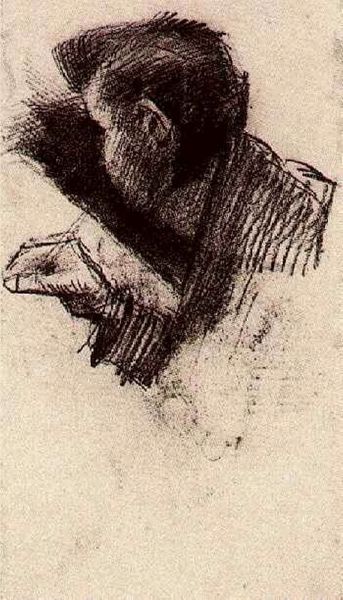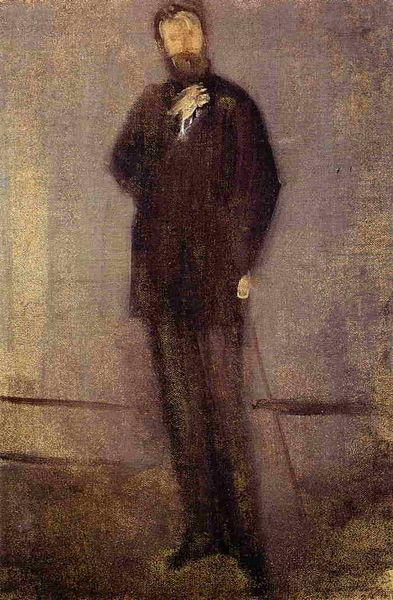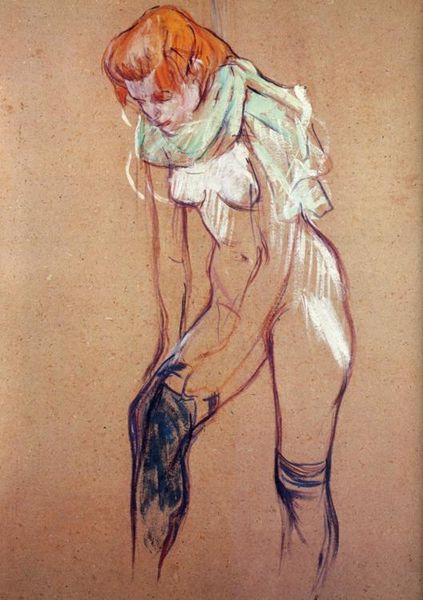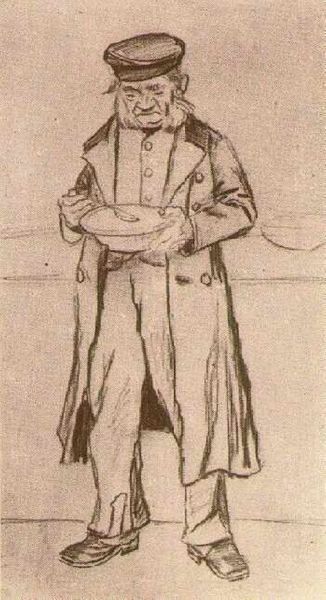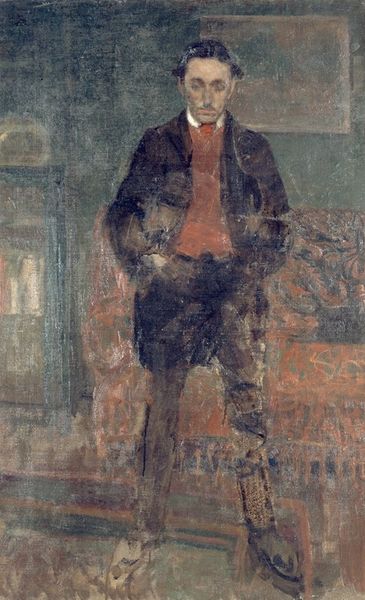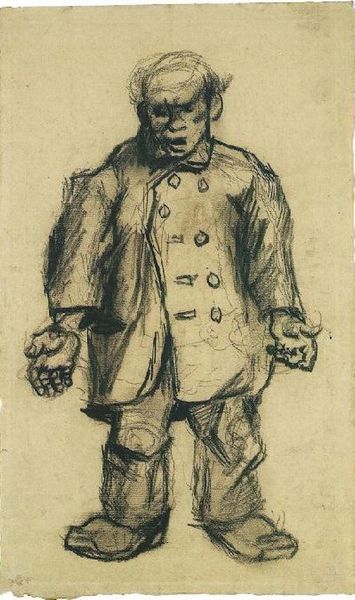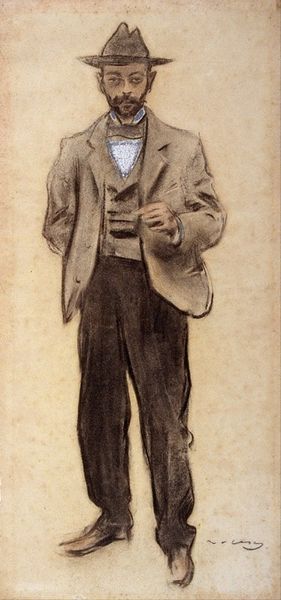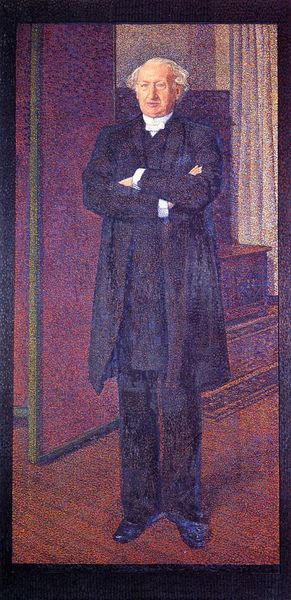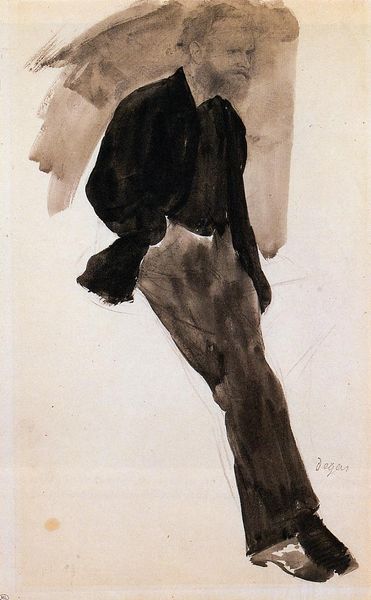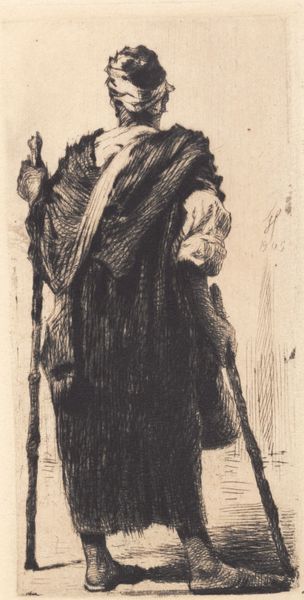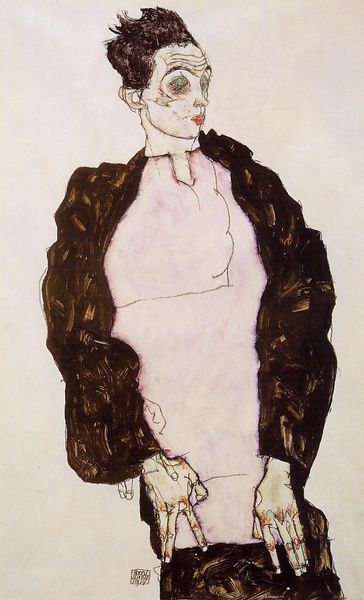
drawing, charcoal
#
portrait
#
drawing
#
impressionism
#
charcoal drawing
#
figuration
#
oil painting
#
portrait drawing
#
charcoal
#
realism
Copyright: Public domain
Edgar Degas made this drawing of his brother, Achille de Gas, at some point in the late 19th century, using charcoal and pastel on paper. The portrait gives us insight into the cultural codes of bourgeois masculinity in France at this time. The top hat, tailored suit, and cane were all signs of Achille’s social position and aspirations. Degas’s technique also speaks to the rapidly changing artistic landscape of Paris, moving away from the formal conventions of academic art and towards a looser, more modern style. But Degas was not simply reflecting the social norms of his time, he was also interrogating them. What does it mean to represent one’s brother? What social expectations are being both met and challenged in the aesthetic setting of the artist’s studio? As art historians, we can research period fashion, consult family letters, and compare this drawing to others by Degas and his contemporaries to better understand these social and institutional dynamics.
Comments
No comments
Be the first to comment and join the conversation on the ultimate creative platform.
